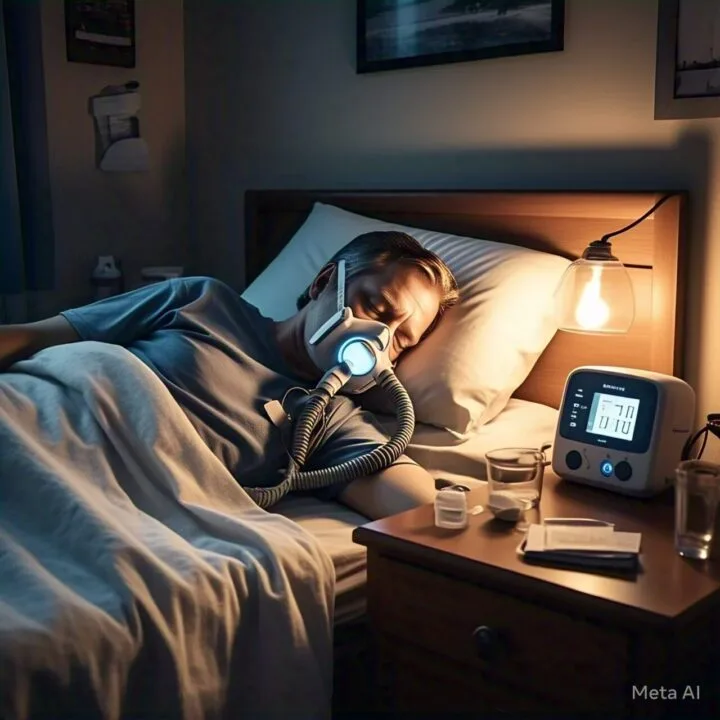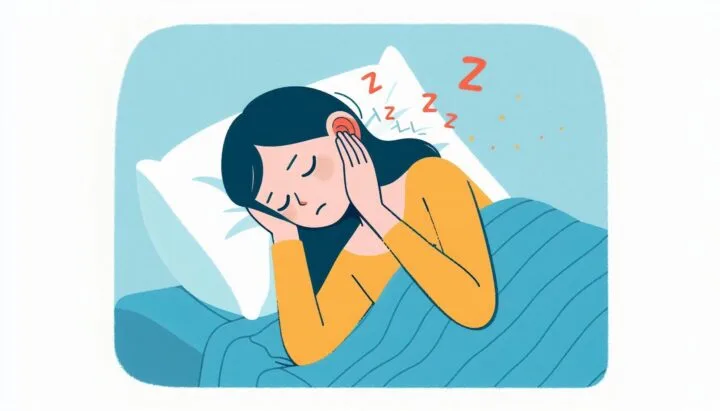Understanding the Pittsburgh Sleep Quality Index (PSQI)
Table of Contents

Sleep quality plays a crucial role in our overall health and well-being. But how can we measure something as subjective as sleep quality? Enter the Pittsburgh Sleep Quality Index (PSQI), a widely used tool in both clinical and research settings. In this comprehensive guide, we’ll explore what the PSQI is, how it works, and why it’s important for understanding and improving sleep health. Whether you’re a healthcare professional, researcher, or simply someone interested in learning more about sleep assessment, this article will provide valuable insights into this important sleep quality measure.
What is the Pittsburgh Sleep Quality Index?
The Pittsburgh Sleep Quality Index (PSQI) is a self-report questionnaire designed to assess sleep quality over a one-month period. Developed by researchers at the University of Pittsburgh, the PSQI has become a standard tool in sleep research and clinical practice since its introduction in 1989.
Components of the PSQI
The PSQI consists of 19 self-rated questions that are grouped into seven components:
- Subjective sleep quality
- Sleep latency (time it takes to fall asleep)
- Sleep duration
- Habitual sleep efficiency
- Sleep disturbances
- Use of sleeping medication
- Daytime dysfunction
Each of these components provides valuable information about different aspects of sleep quality.
How the PSQI Works
Questionnaire Structure
The PSQI asks respondents to answer questions about their sleep habits over the past month. Questions cover various aspects of sleep, including:
- Typical bedtime and wake time
- How long it takes to fall asleep
- Number of hours actually slept
- Frequency of sleep disturbances
Scoring System
Each component is scored on a scale of 0-3, where 0 indicates no difficulty and 3 indicates severe difficulty. The component scores are then added to yield a global PSQI score, which can range from 0 to 21.
Interpreting PSQI Scores
A global PSQI score of 5 or greater is considered to indicate poor sleep quality. This cutoff has been found to have a diagnostic sensitivity of 89.6% and specificity of 86.5% in distinguishing good and poor sleepers.
Applications of the PSQI
Clinical Use
In clinical settings, the PSQI can be used to:
- Screen for sleep disorders
- Monitor treatment effectiveness
- Assess sleep quality in patients with various health conditions
Research Applications
Researchers use the PSQI to:
- Study sleep patterns in different populations
- Investigate relationships between sleep quality and other health outcomes
- Evaluate the impact of interventions on sleep quality
Advantages of the PSQI
Comprehensive Assessment
The PSQI provides a multi-dimensional picture of sleep quality, covering various aspects that contribute to overall sleep health.
Validated Tool
Numerous studies have confirmed the reliability and validity of the PSQI across different populations and cultures.
Easy to Administer
The questionnaire is relatively short and can be completed in 5-10 minutes, making it practical for both clinical and research use.
Limitations of the PSQI
Subjective Nature
As a self-report measure, the PSQI relies on the respondent’s perception and recall, which may not always align with objective sleep measures.
Time Frame
The one-month assessment period may not capture night-to-night variability in sleep patterns.
Cultural Considerations
While the PSQI has been translated into many languages, cultural differences in sleep habits and perceptions may affect its applicability in some populations.
PSQI vs. Other Sleep Assessment Tools
Comparison with Actigraphy
While actigraphy provides objective data on sleep-wake patterns, the PSQI offers insights into subjective sleep quality that actigraphy cannot capture.
PSQI and Polysomnography
Polysomnography is the gold standard for diagnosing sleep disorders, but the PSQI can complement these objective measures by providing information on habitual sleep patterns and subjective experiences.
Improving Your PSQI Score
If you’ve taken the PSQI and found your sleep quality lacking, consider these strategies:
- Establish a consistent sleep schedule
- Create a relaxing bedtime routine
- Optimize your sleep environment
- Limit caffeine and alcohol intake, especially near bedtime
- Increase physical activity during the day
The Future of Sleep Quality Assessment
As technology advances, we may see new tools that combine subjective measures like the PSQI with objective data from wearable devices, providing an even more comprehensive picture of sleep health.
Conclusion
The Pittsburgh Sleep Quality Index is a valuable tool for assessing sleep quality in both clinical and research settings. By providing a comprehensive, yet easy-to-administer measure of sleep quality, the PSQI has contributed significantly to our understanding of sleep health and its impact on overall well-being. Whether you’re a healthcare professional using the PSQI to assess patients, a researcher studying sleep patterns, or an individual interested in your own sleep quality, understanding this index can provide valuable insights into the complex world of sleep.
Remember, while the PSQI is a useful tool, it’s just one piece of the puzzle when it comes to sleep health. If you’re concerned about your sleep quality, it’s always best to consult with a healthcare professional who can provide a comprehensive evaluation and personalized advice.
FAQs
- Q: How often should I take the PSQI?
A: The PSQI is designed to assess sleep quality over the past month. In clinical settings, it may be administered at regular intervals to track changes over time, such as before and after treatment interventions. - Q: Can children use the PSQI?
A: The original PSQI was developed for adults. There are modified versions for use with adolescents, but for younger children, other age-appropriate sleep assessments are typically used. - Q: Is a high PSQI score always indicative of a sleep disorder?
A: While a high PSQI score (5 or above) suggests poor sleep quality, it doesn’t necessarily diagnose a specific sleep disorder. It’s a screening tool that may indicate the need for further evaluation by a healthcare professional. - Q: How does the PSQI account for different sleep schedules, such as those of shift workers?
A: The PSQI asks about your usual sleep habits, regardless of your work schedule. However, it may not fully capture the complexities of irregular sleep patterns. In such cases, additional assessment tools may be needed. - Q: Can improving my sleep habits lower my PSQI score?
A: Yes, adopting good sleep hygiene practices and addressing factors that disrupt your sleep can lead to improved sleep quality, which may be reflected in a lower PSQI score over time.
Author Bio:
Dr. Emily Chen, Ph.D., is a sleep researcher and clinical psychologist with over 15 years of experience in sleep medicine. She completed her doctoral training at Stanford University’s Sleep Medicine Center and has published numerous peer-reviewed articles on sleep assessment and interventions. Dr. Chen is passionate about helping individuals understand and improve their sleep quality for better overall health and well-being.
References:
- Buysse, D. J., Reynolds, C. F., Monk, T. H., Berman, S. R., & Kupfer, D. J. (1989). The Pittsburgh Sleep Quality Index: a new instrument for psychiatric practice and research. Psychiatry Research, 28(2), 193-213.
- Mollayeva, T., Thurairajah, P., Burton, K., Mollayeva, S., Shapiro, C. M., & Colantonio, A. (2016). The Pittsburgh sleep quality index as a screening tool for sleep dysfunction in clinical and non-clinical samples: A systematic review and meta-analysis. Sleep Medicine Reviews, 25, 52-73.
- Grandner, M. A., Kripke, D. F., Yoon, I. Y., & Youngstedt, S. D. (2006). Criterion validity of the Pittsburgh Sleep Quality Index: Investigation in a non-clinical sample. Sleep and Biological Rhythms, 4(2), 129-136.
- Backhaus, J., Junghanns, K., Broocks, A., Riemann, D., & Hohagen, F. (2002). Test–retest reliability and validity of the Pittsburgh Sleep Quality Index in primary insomnia. Journal of Psychosomatic Research, 53(3), 737-740.
- Carpenter, J. S., & Andrykowski, M. A. (1998). Psychometric evaluation of the Pittsburgh Sleep Quality Index. Journal of Psychosomatic Research, 45(1), 5-13.
Citations:
[1] https://www.sleep.pitt.edu/psqi
[2] https://pubmed.ncbi.nlm.nih.gov/2748771/
[3] https://en.wikipedia.org/wiki/Pittsburgh_Sleep_Quality_Index
[4] https://www.thoracic.org/members/assemblies/assemblies/srn/questionaires/psqi.php
[5] https://www.med.upenn.edu/cbti/assets/user-content/documents/Pittsburgh%20Sleep%20Quality%20Index%20%28PSQI%29.pdf
[6] https://www.hopkinsmedicine.org/health/conditions-and-diseases/obstructive-sleep-apnea
[7] https://my.clevelandclinic.org/health/diseases/8718-sleep-apnea
[8] https://www.mayoclinic.org/diseases-conditions/sleep-apnea/symptoms-causes/syc-20377631














Post Comment